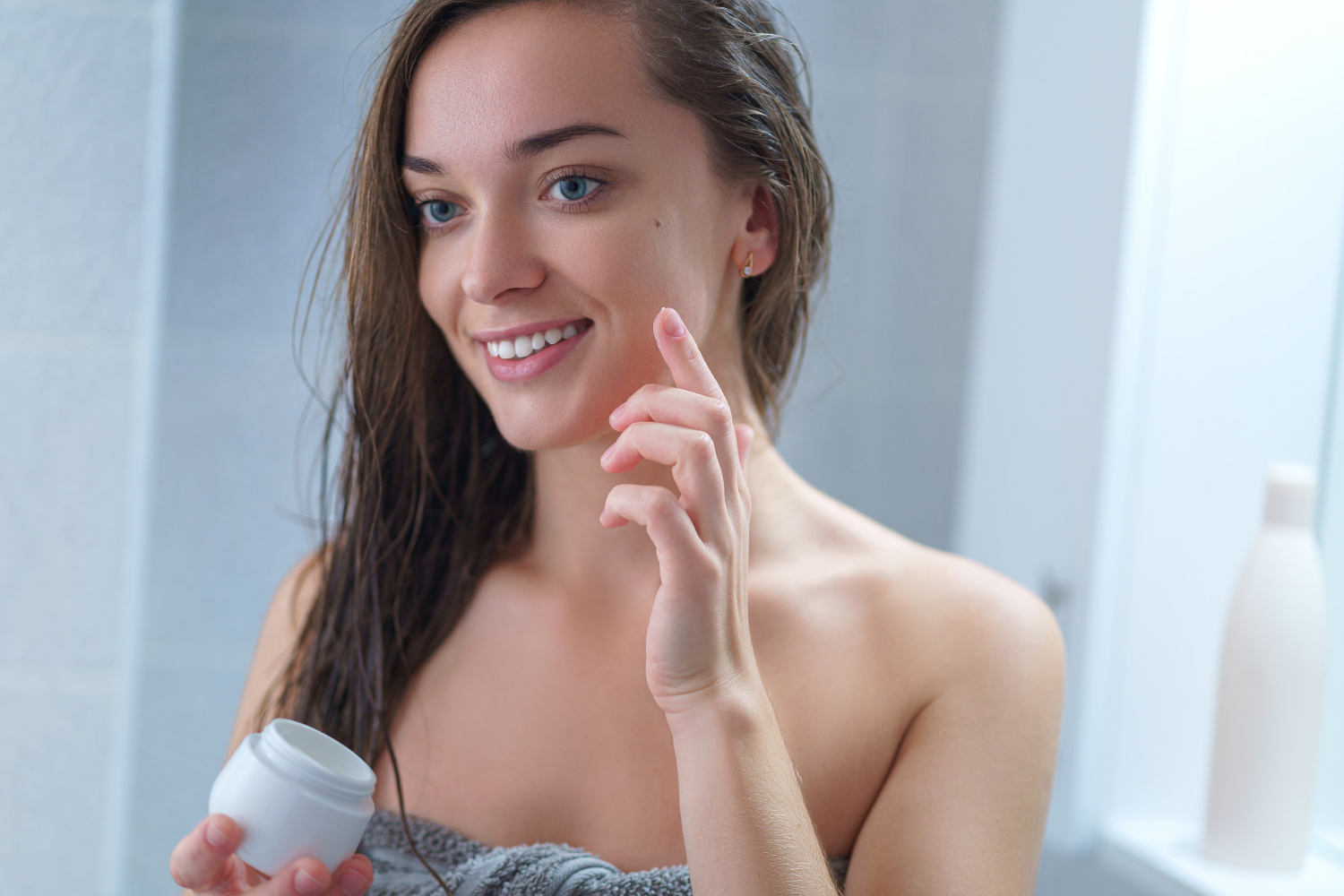Retinol cream is a popular skincare product known for its ability to improve skin texture and reduce signs of aging. It is a form of vitamin A that can effectively treat various skin concerns such as wrinkles, acne, and dark spots. Many people seek out retinol for its proven results supported by dermatologists and skincare experts alike. Understanding how it works and how to use it correctly is essential for anyone looking to enhance their skincare routine.
Choosing the right retinol cream can make a significant difference in achieving the desired results. With numerous options available, factors like concentration and skin type play crucial roles in getting the best outcome. While retinol can provide many benefits, it’s also important to be aware of potential side effects and how to minimize them.
For those considering adding retinol cream to their skincare regimen, knowing the correct application guidelines can help maximize its effectiveness. With the right information, anyone can feel confident about their choice and enjoy the many benefits that retinol has to offer.
Key Takeaways
- Retinol cream helps improve skin and reduce aging signs.
- Proper usage and application are vital for safety and effectiveness.
- Selecting the right product is key to achieving desired skin results.
What Is Retinol Cream?
Retinol cream is a popular skincare product known for its anti-aging and acne treatment properties. It is derived from vitamin A and contains active ingredients that work to improve skin texture and tone. Below are key details about its definition and how it functions in skincare.
Definition and Active Ingredients
Retinol cream primarily contains retinol, a form of vitamin A that plays a crucial role in skin health. It may also include other active ingredients such as bakuchiol and antioxidants. Bakuchiol, often referred to as a natural alternative to retinol, works similarly to enhance skin appearance without the irritation sometimes caused by retinol.
Many products feature retinol in varying concentrations. For example, Paula’s Choice Clinical 0.3% Retinol combines retinol with bakuchiol, while RoC Retinol Correxion is known for its effectiveness against deep wrinkles.
Retinol is commonly found in both creams and serums sold over the counter. More potent forms of retinol are available by prescription.
How Retinol Works in Skincare
Retinol works by promoting skin cell turnover, which helps to shed old skin and develop new skin. This process smooths fine lines and wrinkles while also reducing the appearance of acne scars.
Additionally, retinol stimulates collagen production, essential for maintaining skin elasticity and firmness. It helps unclog pores, making it effective for those with oily or acne-prone skin. The constant renewal encourages a brighter, more even complexion.
It’s crucial to use retinol during nighttime application. This is because retinol can increase skin sensitivity to sunlight. Users should also apply sunscreen during the day to protect the skin after using retinol products.
Benefits of Retinol Cream
Retinol cream offers several key benefits for skin health. Its ability to reduce aging signs, improve skin texture, and control acne makes it a popular choice among many skin care users.
Anti-Aging Effects
Retinol is well-known for its anti-aging properties. It promotes cell turnover, which helps to reduce fine lines and wrinkles. The active ingredient encourages the production of collagen, a protein that keeps skin firm and youthful.
By using retinol regularly, users may notice a smoother appearance. Studies suggest that consistent use can lead to significant improvements in skin elasticity.
Common results include:
- Reduction of fine lines.
- Decreased appearance of deep wrinkles.
Many people begin to see visible changes within a few weeks of starting treatment.
Skin Texture Improvement
In addition to its anti-aging effects, retinol helps to enhance overall skin texture. It works by exfoliating the outer skin layer, leading to a smoother surface.
This process can reduce rough patches and blemishes. Over time, skin may feel softer and look more radiant.
Key benefits include:
- Minimizes large pores.
- Improves uneven skin tone.
Users may also experience a reduction in sun damage, as retinol encourages new skin cell growth, replacing older, damaged cells.
Acne and Blemish Control
Retinol is effective in managing acne and preventing future breakouts. It unclogs pores by promoting faster cell turnover, which helps to prevent trapped oils and bacteria.
Many dermatologists recommend retinol for acne-prone skin. Regular application can lead to fewer blemishes and less severe breakouts.
Specific advantages include:
- Reduced inflammation.
- Diminished appearance of acne scars.
For those dealing with persistent acne, retinol can be a vital part of their skincare routine.
Application Guidelines for Retinol Cream
Using retinol cream can significantly improve skin texture and reduce signs of aging. It’s important to follow specific guidelines for application to maximize benefits and minimize irritation.
Starting with Retinol
When beginning to use retinol, starting slow is crucial. Users should opt for a low concentration, typically around 0.3%. This allows skin to adjust without excessive irritation.
Applying a pea-sized amount is usually sufficient for the entire face. It is wise to apply retinol on clean, dry skin. A good practice is to wait about 15-20 minutes after cleansing before application. This reduces the likelihood of irritation.
At first, users should apply retinol once or twice a week. They can gradually increase frequency as their skin adapts. This gradual approach helps to build tolerance and reduce potential side effects like redness or peeling.
Frequency and Dosage
The frequency of retinol use can vary based on skin type and tolerance. Initially, applying retinol two to three times a week is recommended. This approach allows the skin to acclimate to the active ingredient.
As the skin becomes more tolerant, users can increase applications to five times a week. It is important to listen to one’s skin. If irritation occurs, reduce the frequency back to a comfortable level.
Maintaining a consistent routine supports better results over time. Keeping a regular schedule helps to optimize retinol’s benefits. Users should remember that patience is key, as improvements may take several weeks to become noticeable.
Combining Retinol With Other Skincare Products
Combining retinol with other skincare products can enhance its effectiveness. Users should avoid ingredients that cause irritation, such as acids or benzoyl peroxide, when starting.
For hydration, applying a gentle moisturizer before or after retinol can help reduce dryness. This method helps lock in moisture and keeps skin comfortable.
It is also beneficial to incorporate sunscreen during the day. Retinol can make skin more sensitive to the sun, increasing the risk of sunburn. A broad-spectrum SPF of 30 or higher is advisable.
Users should assess their skin’s response to different combinations. Keeping a simple routine allows for easier identification of any issues that may arise.
Side Effects and Precautions
Retinol cream can provide significant benefits for the skin, but it is important to recognize potential side effects and take necessary precautions. Understanding common reactions and how to prevent or manage them can lead to a better experience.
Common Skin Reactions
Using retinol cream can lead to several common skin reactions. New users may experience:
- Irritation: This can show up as redness or a burning sensation on the skin.
- Dryness: A feeling of tightness is frequent, especially during initial use.
- Peeling: Shedding of the outer skin layers can occur, which is normal as the skin adjusts.
- Itchiness: Skin can become itchy, particularly on the face and neck.
These reactions often diminish as the skin becomes accustomed to retinol. If they persist or worsen, it’s advisable to consult a dermatologist.
Preventing and Managing Side Effects
To help minimize the side effects of retinol, several strategies can be employed:
- Start Slow: Begin using retinol once or twice a week, gradually increasing frequency.
- Use Moisturizers: Applying a moisturizer can combat dryness and irritation.
- Apply Sunscreen: Sunscreen is essential, as retinol can make the skin more sensitive to sunlight.
- Avoid Other Irritants: Steer clear of strong exfoliants or acne treatments during retinol use.
If side effects develop, reducing application frequency or pausing usage can help. Consulting a healthcare provider for persistent issues is also advisable.
Choosing the Right Retinol Cream
Selecting the right retinol cream is crucial for achieving desired results without causing irritation. Key factors to consider include product quality and appropriate retinol concentrations for specific skin types.
Identifying Quality Products
When choosing a retinol cream, look for reputable brands that emphasize research and quality. Products should ideally have clinical testing to support their claims. Key ingredients to consider include:
- Retinol: The form of Vitamin A that helps with skin texture and fine lines.
- Peptides: These support skin structure and boost hydration.
- Anti-irritants: Such as hyaluronic acid or shea butter to minimize potential side effects.
Check for certifications and reviews from dermatologists to ensure the product has been proven effective. Packaging should also protect the ingredients from light and air, which can degrade retinol.
Retinol Concentrations and Skin Types
Retinol concentrations vary, typically ranging from 0.1% to 1%. Beginners should start with lower concentrations to identify skin tolerance. Here’s a breakdown:
- 0.1% to 0.3%: Suitable for sensitive skin or those new to retinol, these lower doses help the skin adjust without causing redness.
- 0.5% to 1%: Best for normal to oily skin types, these concentrations target deeper wrinkles and provide faster results.
For acne-prone skin, options with bakuchiol may be beneficial. He or she should also consider a patch test to ensure compatibility. Always consult a dermatologist for personalized recommendations.



